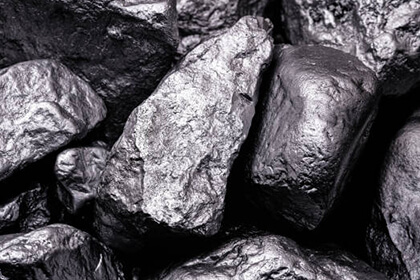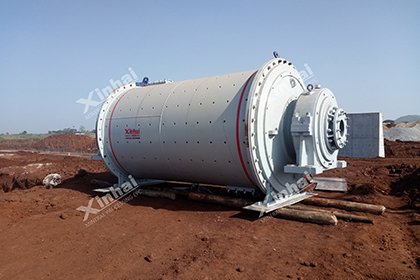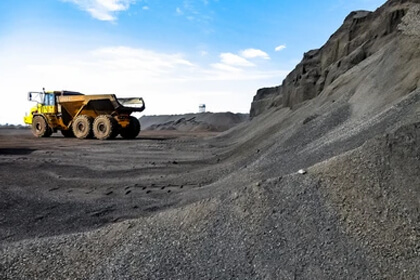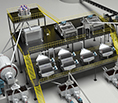The Manganese Mining Process Explained
 Laura
Laura
 Oct 31, 2025
Oct 31, 2025
 445
445
If you want to know more details about equipment, solutions, etc, please click the button below for free consultation, or leave your requirements!
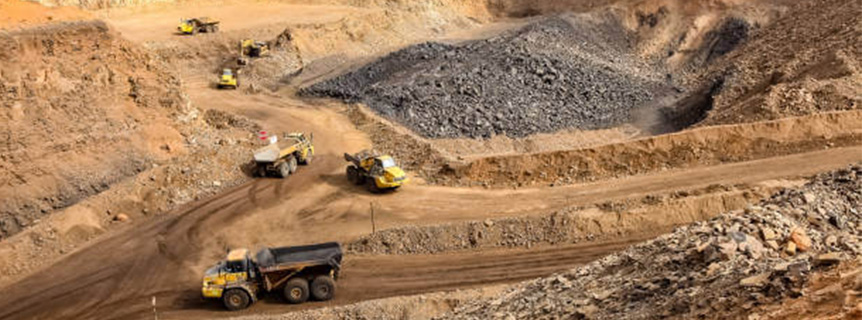
Manganese mine
Manganese is an essential element in the production of steel, batteries, and various chemical processes. With increasing global demand for steel and energy storage solutions, the importance of manganese mining continues to rise. In this article, we will explain the manganese mining process, covering everything from exploration and extraction to processing and refinement.
What is Manganese?
Manganese is a naturally occurring metal that is primarily found in manganese ores, often in the form of manganese oxide (MnO2) or manganese carbonate (MnCO3). It is a crucial component in the production of steel, where it acts as a deoxidizing agent and improves the steel’s strength, toughness, and wear resistance.
Apart from steel production, manganese is also used in batteries, fertilizers, chemical manufacturing, and as a pigment in paints and dyes.
01Step 1: Exploration and Site Assessment
BackThe first step in manganese mining is exploration. This involves identifying potential ore bodies through geological surveys, core sampling, and aerial mapping. The goal is to locate high-grade manganese deposits that are economically feasible for extraction.
Geological Surveys: Geologists use surface mapping, satellite imaging, and geophysical techniques to locate manganese-rich areas.
Core Sampling: Core samples are taken from drilled boreholes to analyze the mineral content and determine whether the deposit is worth mining.
Assay Testing: The samples are sent to laboratories for testing to determine the exact grade and composition of the manganese ore.
Once a deposit is identified, mining companies will assess environmental considerations and begin planning the most cost-effective and efficient extraction method.
02Step 2: Extraction Methods
BackManganese can be mined using two main methods: open-pit mining and underground mining. The choice of method depends on the depth and location of the manganese deposit.
1. Open-Pit Mining
When manganese ore is located near the earth’s surface, open-pit mining is typically used. This method involves the removal of overburden (soil, rock, and vegetation) to expose the manganese ore beneath.
Advantages: Open-pit mining is generally more cost-effective and quicker, especially for shallow deposits.
Disadvantages: It can cause significant environmental damage due to large-scale excavation and disturbance to the landscape.
2. Underground Mining
For deeper manganese deposits, underground mining is preferred. This method involves creating tunnels or shafts to access the ore body. The extracted ore is then transported to the surface for processing.
Advantages: Less surface disturbance and more suitable for deep, high-quality deposits.
Disadvantages: More expensive due to the need for specialized equipment and higher safety protocols.
03Step 3: Crushing and Screening
BackOnce the ore is extracted, it must undergo crushing and screening to reduce its size and separate valuable ore from waste rock. This step ensures that the ore is ready for further processing.
Crushing: The ore is initially crushed into smaller sizes using jaw crushers, cone crushers, or impact crushers. This helps to break down the ore into manageable pieces.
Screening: After crushing, the ore is sifted to separate fine particles from larger rocks. The purpose of this is to ensure that only the desired particle sizes move on to the next stage of processing.
04Step 4: Beneficiation: Concentrating Manganese
BackThe beneficiation process is essential to separate valuable manganese ore from the unwanted gangue (waste) material. Manganese ore often contains impurities such as silica, iron, and other minerals. There are several beneficiation techniques used to concentrate the ore:
1. Gravity Separation
Gravity separation is the most common method for concentrating manganese ore. This method utilizes the difference in density between manganese and other minerals in the ore to separate them. Gravity separation techniques include:
Shaking Tables: These tables use gravity and motion to separate materials based on their density.
Jigs: A type of gravity separator that uses pulsating water flow to segregate ore particles by density.
2. Flotation
Froth flotation is another beneficiation technique used for manganese ore that contains impurities. The ore is mixed with water and chemicals to form a slurry. Air bubbles are introduced, allowing the manganese ore to float to the surface, where it is skimmed off as froth. The waste materials, or tailings, sink to the bottom.
3. Magnetic Separation
Since manganese is a ferromagnetic material, it can be separated from non-magnetic impurities using magnetic separators. This process is useful when the ore contains magnetic minerals like iron or titanium.
05Step 5: Smelting and Refining
BackAfter beneficiation, the manganese concentrate is smelted in a furnace to produce either high-grade manganese ore or ferromanganese, an alloy used in steelmaking.
1. Smelting
Manganese ore is smelted at high temperatures in a blast furnace or electric arc furnace. This process involves reducing manganese oxide (MnO2) with carbon (typically in the form of coke) to produce manganese metal or manganese alloys.
Ferromanganese: A high-carbon alloy used in steel production. The carbon content varies depending on the intended use of the steel.
Silicomanganese: Another alloy that contains both silicon and manganese, used primarily in the production of low-carbon steel.
2. Refining
After smelting, the manganese metal may undergo refining to remove any remaining impurities. This is typically done using electrolytic refining or hydrometallurgical processes, which use acid solutions to purify the metal.
06Step 6: Final Processing and Applications
BackThe final manganese products are then processed into various forms based on their intended use:
Manganese Ore: Processed into manganese lumps or fines for industrial uses.
Manganese Alloys: Produced in various grades for the steel industry.
Manganese Metal: Used in the production of batteries (especially in lithium-ion batteries) and electronic components.
***Environmental Considerations in Manganese Mining***
Manganese mining and processing can have significant environmental impacts, including:
Water Pollution: The beneficiation process often requires the use of water and chemicals, leading to potential water contamination.
Air Pollution: Smelting processes can release dust, fumes, and gases that may contribute to air pollution.
Habitat Destruction: Open-pit mining can disrupt local ecosystems and wildlife habitats.
To mitigate these impacts, mining companies are adopting more sustainable practices, such as:
Recycling and Reuse: Some manganese ores are reused, reducing the environmental impact of fresh extraction.
Water Treatment: Implementing systems to treat and recycle water used in beneficiation processes.
Rehabilitation: Post-mining site rehabilitation to restore land and prevent soil erosion and habitat destruction.
07Conclusion
BackThe manganese mining process is a complex and multi-step operation involving exploration, extraction, beneficiation, smelting, and refining. Manganese is a critical material used in the production of steel, batteries, and other industrial applications. With global demand increasing, understanding the mining and processing of manganese is essential for stakeholders in the mining and manufacturing industries. By adopting sustainable mining practices, the industry can continue to meet growing demand while minimizing environmental impact.
Feel free to contact us and learn more about manganese processing solutions!
 +86 183 3575 8886
+86 183 3575 8886 pinklaurabao@gmail.com
pinklaurabao@gmail.com



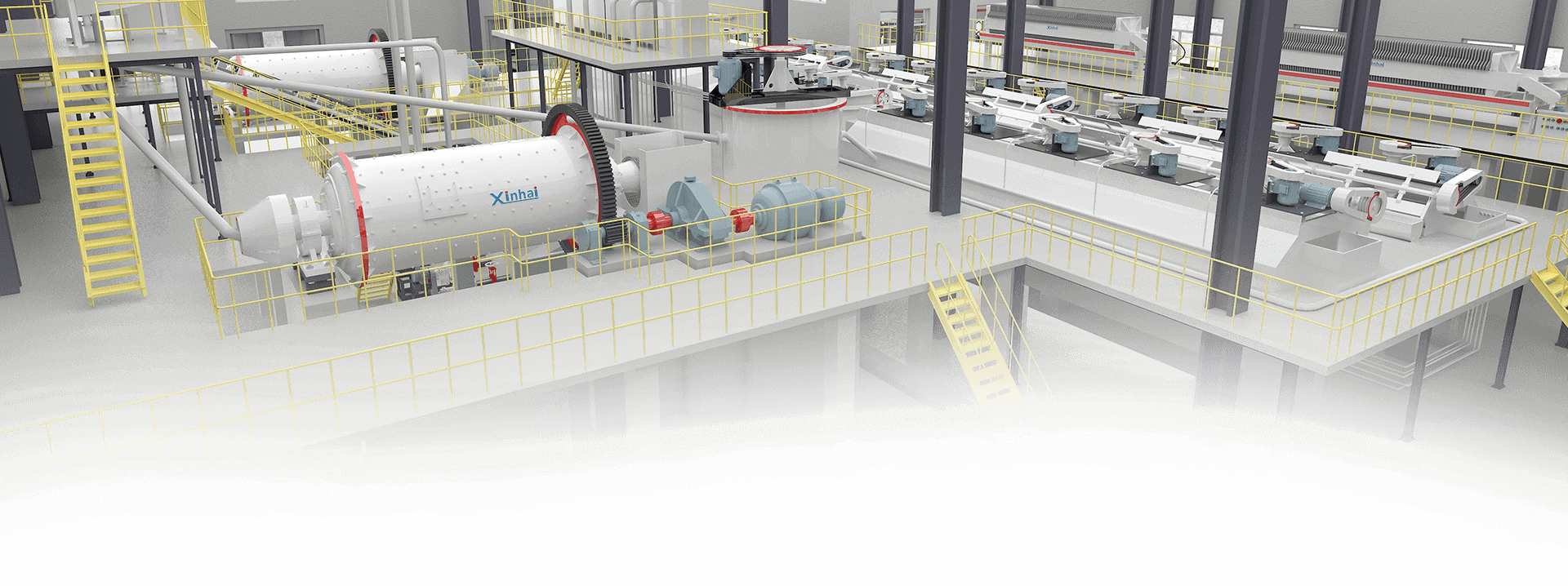
 Message
Message Chat Now
Chat Now


